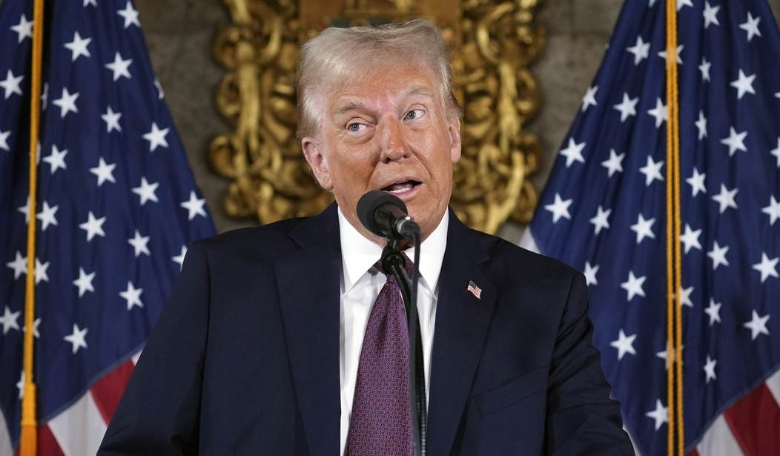Former President Donald Trump has set the stage for a streamlined and focused administration should he reclaim the presidency. In a detailed post on Truth Social, Trump outlined his stringent new hiring guidelines, reflecting lessons learned from the challenges of his first term. His directive makes clear who will—and won’t—be welcome in a second Trump administration, offering a glimpse into the leadership style he aims to adopt.
During his first term, Trump faced numerous setbacks stemming from what he deemed poor personnel choices. Staff leaks, internal conflicts, and perceived sabotage by establishment insiders marred his efforts to advance his agenda. Determined to avoid those pitfalls, Trump is focusing on loyalty, alignment, and competence as cornerstones of his prospective administration.
Give Me News Podcast
Trump’s message began on an optimistic note, revealing that his team has already onboarded over 1,000 individuals in preparation for a potential second term. “They are outstanding in every way,” he wrote, expressing confidence that the American people “will see the fruits of their labor over the coming years.”
With his signature promise to “MAKE AMERICA GREAT AGAIN,” Trump assured supporters that his next administration would deliver rapid results, emphasizing his intent to restore national greatness “very quickly.”
The post’s most striking element was Trump’s unfiltered warning against recommending certain figures for roles in his administration. In his signature style, he explicitly named individuals and organizations he considers unfit to serve:
“In order to save time, money, and effort, it would be helpful if you would not send, or recommend to us, people who worked with, or are endorsed by, Americans for No Prosperity (headed by Charles Koch), ‘Dumb as a Rock’ John Bolton, ‘Birdbrain’ Nikki Haley, Mike Pence, disloyal Warmongers Dick Cheney, and his Psycho daughter, Liz, Mitt Romney, Paul Ryan, General(?) Mark Milley, James Mattis, Mark Yesper, or any of the other people suffering from Trump Derangement Syndrome, more commonly known as TDS. Thank you for your attention to this matter!”
Trump’s pointed exclusion of figures like John Bolton, Nikki Haley, and Mike Pence underscores his determination to build a team that aligns fully with his vision and remains unwaveringly loyal to his leadership.
Critics argue that Trump’s approach risks alienating experienced individuals and creating an echo chamber. However, Trump’s supporters see his emphasis on loyalty as a practical response to the betrayals and inefficiencies that hindered his first term.
During his presidency, leaks and public criticism from former staffers undermined his administration’s cohesion. By preemptively addressing this issue, Trump hopes to avoid a repeat of the internal strife that marked his earlier tenure.
The approach also aligns with precedents set by other administrations. Barack Obama, for example, relied heavily on trusted allies like Eric Holder, who famously referred to himself as Obama’s “wingman.” Joe Biden has similarly staffed his administration with loyalists. Trump’s strategy, therefore, is neither unprecedented nor unreasonable—it is an effort to ensure his vision is executed effectively.
Trump’s directive has energized his base, with many praising his no-nonsense attitude and commitment to rejecting establishment influence. Supporters view the exclusions as a necessary step to prevent interference from individuals who have previously undermined Trump’s agenda or openly opposed his policies.
Critics, however, question the potential consequences of such an approach. They argue that Trump’s blunt tone and willingness to name names could alienate moderates and reduce the pool of qualified candidates willing to serve. Despite the criticisms, Trump’s strategy signals a clear shift in priorities for a potential second term. By assembling a team fully aligned with his goals, Trump aims to deliver on his promise of rapid and impactful governance. His emphasis on loyalty, ideological alignment, and rejecting the influence of establishment figures reflects a calculated effort to sidestep the challenges of his first term.
Whether one views Trump’s hiring guidelines as practical or polarizing, they underscore his commitment to a unified and efficient administration. His willingness to name specific individuals and organizations as unwelcome sends a powerful message: his next administration will operate on his terms, free from the constraints of establishment politics.
As Trump positions himself for a potential return to the White House, his hiring policies reveal a leader determined to learn from the past and focus on the future. With over 1,000 vetted team members already in place, Trump is signaling that his second term will be defined by clarity, decisiveness, and an unwavering commitment to his agenda.


the first rule is very simple. You have to be a ZIONIST PUPPET, as he is!
He’s learning from his experiences and those who are against him say he shouldn’t. That’s because they don’t or won’t. As has been said: Those who refuse to learn from history are doomed to repeat it.